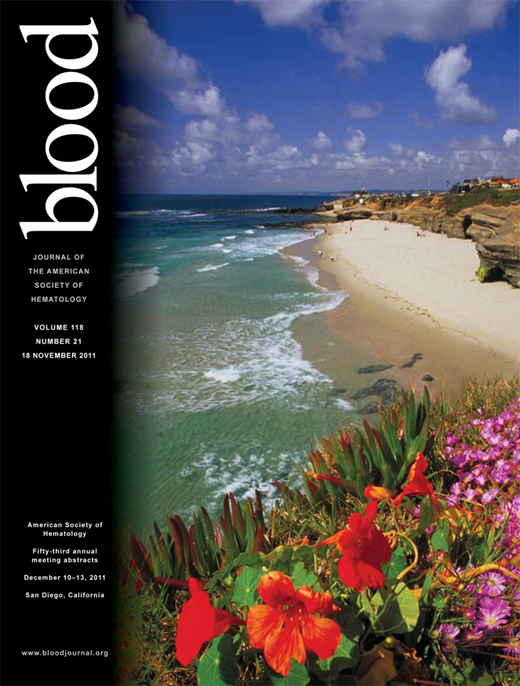Abstract
Abstract 984
ROR1 is an orphan receptor tyrosine kinase that is expressed on leukemia cells of patients with chronic lymphocytic leukemia (CLL), but not on most adult tissues of healthy adults, including CD5+ B cells. To generate anti-ROR1 antibodies, we immunized mice using different strategies employing vaccines comprised of recombinant ROR1 protein, polynucleotide-ROR1 vaccines and CD154 genetic adjuvants, or replication-defective adenovirus vectors encoding ROR1 and CD154. We extirpated the spleens of animals that developed high-titer serum anti-ROR1 antibodies and used these to generate monoclonal-antibody-(mAb)-producing hybridomas or antibody phage-display libraries that subsequently were screened for ROR1-binding. Over 70 unique mAbs were generated that each bound the extra-cellular domain of native ROR1. Most mAbs recognized an epitope(s) within the ROR1 Ig-like domain, which appears to represent the immune dominant epitope. Other mAb recognized epitopes within the conserved ROR1 Kringle domain. One mAb (UC D10-001) had distinctive binding to an intradomain epitope of human ROR1 (hROR1). UC D10-001 was the only mAb we found directly cytotoxic for hROR1-expressing leukemia cells cultured in media without complement for 6 hours. We found that UC D10-001 could induce significant reductions in basal levels of phosphorylated AKT in hROR1-expressing leukemia cells. Moreover, UC D10-001 significantly decreased the basal levels of phosphorylated AKT in freshly isolated human CLL cells (N=4) to levels comparable to that observed in co-cultures containing 10 mM LY294002, a broad-spectrum inhibitor of PI3K. We examined whether this mAb had cytotoxic activity for leukemia cell in vivo. For this we examined whether we could inhibit the adoptive transfer of human-ROR1-expressing leukemia cells to young, syngeneic recipient mice made transgenic for human ROR1 under control of a B-cell specific promoter. Cohorts of 5 animals per group were each given intravenous injections of antibody at a dose of at 10 mg/kg. Each cohort was treated with UC D10-001, control IgG, or 4A5, an anti-ROR1 mAb specific for a non-cross-reactive epitope located in the Ig-like domain of ROR1. Each animal received an intravenous injection of 5 × 105 ROR1-expressing leukemia cells and then was assessed weekly for circulating leukemia cells by flow cytometry. UC D10-001, but not control IgG or 4A5, significantly inhibited engraftment of the ROR1+ leukemia. Four weeks after adoptive transfer, animals treated with UC D10-001 had a 10-fold lower median number of leukemia B cells in the blood than animals treated with control IgG or 4A5. We also tested UC D10-001 for its capacity to induce clearance of human ROR1+ CLL cells engrafted into the peritoneal cavity of Rag-2−/−/γc−/− immune deficient mice. Each of these mice received intraperitoneal injections of equal numbers of human ROR1+ CLL cells prior to receiving D10-001, control IgG, or 4A5, each at 10 mg/kg. These animals were sacrificed seven days later and the human leukemia cells were harvested via peritoneal lavage. In mice treated with UC D10-001 we harvested an average of only 6 × 104 ± 3 × 104 CLL cells. This number of cells was significantly less than the average number of CLL cells harvested from control IgG or 4A5-treated mice (8 × 105 ± 4 × 105 or 7 × 105 ± 2 × 105, respectively, p <0.01). These studies indicate that the anti-ROR1 mAb UC D10-001 can be directly cytotoxic for ROR1-expressing leukemia cells in vitro and in vivo, a property that apparently is unique to this mAb among other anti-ROR1 mAbs. Because of the restricted expression of ROR1 on leukemia cells and the distinctive properties of this mAb, we propose that UC D10-001 might have potential utility in the treatment of patients with CLL.
No relevant conflicts of interest to declare.
Author notes
Asterisk with author names denotes non-ASH members.

